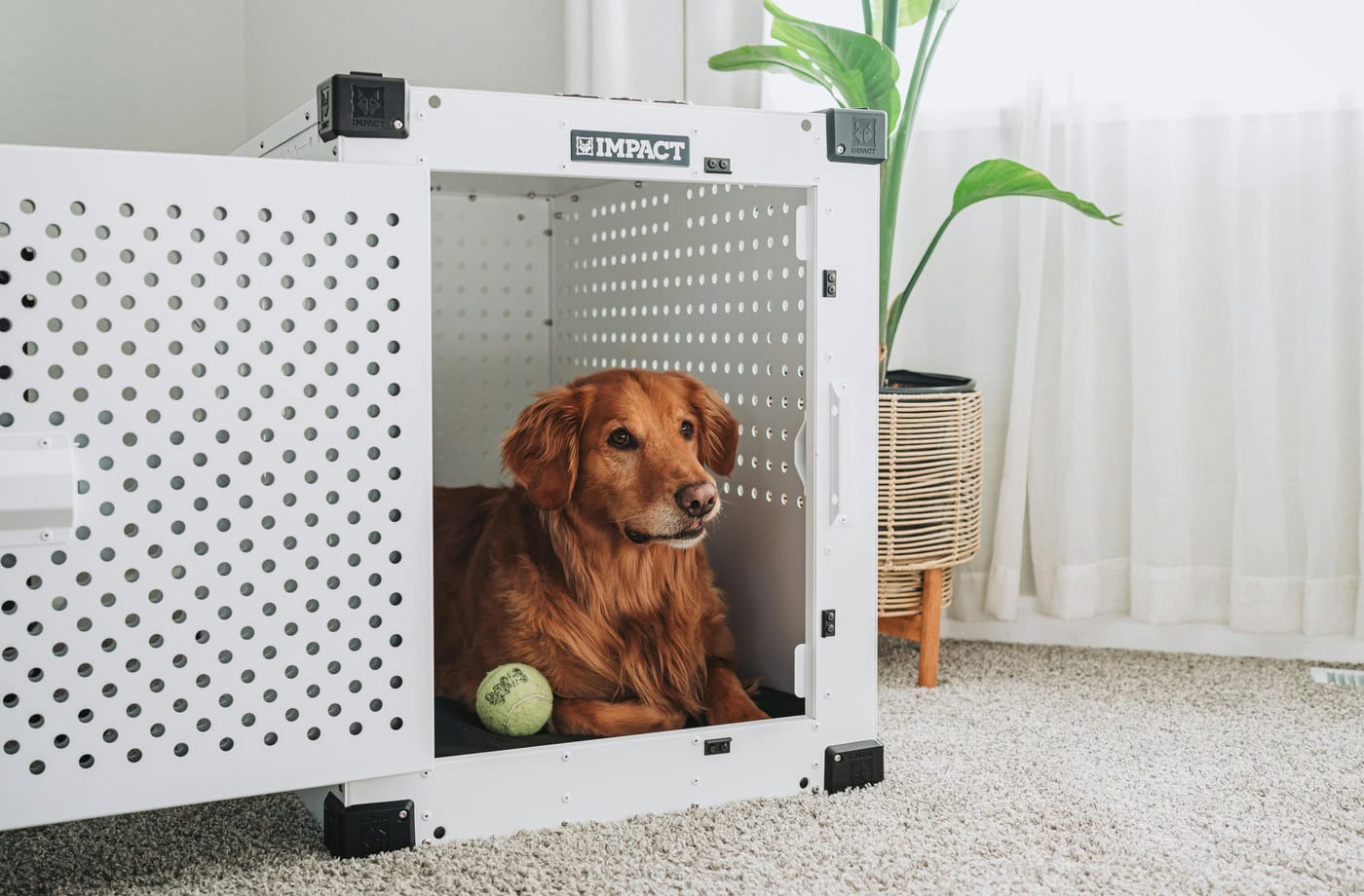There are a few things that can test your patience quite like sleepless nights with a whiny puppy. When you’re in the process of crate training a new puppy, as a pet owner, you’re likely to have some restless nights. Though your fatigued eyes may plead for a solution, your dog’s necessities will always take priority. The good news is that with the proper dog crate training tips, you can help your puppy settle down, feel safe, sleep, and let you have some rest at last. In this article, you’ll discover why your dog whines at night and learn practical, compassionate measures to help you establish restful nights for both you and your best friend.
Why Puppies Whine at Night in the Crate
Bedtime whining is a common challenge for new puppy owners. It’s not just noise — it’s communication based on instincts and physical requirements. When you understand why it is so, you can create dog crate training tips of your own, which will help both your pup’s comfort and peace of mind.

The crate location and routine are crucial aspects of this problem. The extent of the crate, what’s inside, what you do at night, and where the crate is located all contribute to how settled a puppy feels.
The Function of Instinct, Fear, and Anxiety
Dogs are social animals. If a puppy cries at night, it may be suffering from separation anxiety or be in a new place. How to Help a New Puppy Feel Safe. Your puppy has just said goodbye to their littermates and enjoyed five solid weeks of playing and running around with them, and now they must face the days to come alone. Instinct tells them to look for warmth and companionship; after all, a silent, abandoned crate can be pretty scary.
They may whine out of fear, whether it’s due to a new environment, unfamiliar noises, or even darkness. Puppies feel safe near their humans, so simply having the crate near your bedroom can be very comforting on that first night. For advice on navigating difficult times, consider resources like “What To Do When Your Puppy Whines in His Crate At Night,” which offers explanations on how pacing and restlessness can indicate that your dog needs comfort or a bathroom break.
Physical Needs and Discomfort
Puppies cannot go long periods without urinating. Crying at night could also be related to your dog needing a potty break, being hungry, or feeling too hot or cold. Crates that are too small or too large can also disrupt sleep patterns. Generally, your pup should be able to stand up, turn around, and lie flat.
A puppy that is hungry or thirsty, or one with an abundance of energy, may have difficulty sleeping. A consistent feeding and exercise routine, along with the right-sized crate, can help keep the most common late-night problems at bay. See more great puppy advice from Is Your Puppy Crying in Their Crate? This Is What You Need to Do to Deal with Physical Reasons for Whining.
Proven Dog Crate Training Tips to End Nighttime Whining
A routine built on trust and comfort is the key to restful nights. These ideas for dog crate training will help you address both the emotional components and the practical aspects of nighttime whining.
Optimizing Crate Placement and Comfort
Where your crate is placed can be as important as what’s inside it.
- Crate position: Move the crate to your bedroom, or choose a location where your pup can see and hear you. This lowers anxiety and lets your pup know she’s not alone.
- Appropriate crate size: It should be large enough to accommodate your dog, but not so spacious that it encourages an accident. Have your dog stand, turn, and stretch.
- Comforting objects, such as a soft blanket, a beloved toy, or an item with your scent, can reduce stress. Safe chew toys can help to calm nervous pups when used appropriately.
- Lighting and sound: Some puppies may be soothed by a dim nightlight or soft music that helps diminish unexpected night noises.
You can find step-by-step insights on building a cozy crate haven in How to Crate Train Your Dog or Puppy.
Building a Predictable Nighttime Routine
You can experience step-by-step how simple it is to create a peaceful crate haven for your dog by visiting ‘How to Crate Train Your Dog or Puppy’.
- Scheduled feeding: Feed your puppy several hours before bedtime so they have time to digest and go potty.
- Pre-bed potty breaks: Always take your dog outside right before the last crate time of the night.
- Wind-down play: Gentle play or a calming walk helps burn off steam and signals the day is ending.
- Crate transition: Use a phrase like “bedtime” each night before placing your puppy in the crate. Give a treat after they’ve settled quietly.
- Night checks: If your puppy is very young, set an alarm for a middle-of-the-night potty break, then calmly return them to the crate.
Crate training tips? Regular schedule? : is the key to lasting success.
Responding to Whining: When to Comfort, When to Ignore
This is one of the most challenging aspects for new owners. Whining isn’t whining isn’t whining.
- Attention-seeking vs. Real Needs: Complaining immediately after you’ve taken the dog out or fed him might be a sign of attention-seeking, while persistent or sudden whining may be indicative of discomfort or the need to eliminate.
- Intentionally respond: If you believe your puppy probably needs to relieve himself, take it out on a leash, let it potty, and then return it to the crate with no play or fuss.
- Ignore attention-seeking behavior: If your pup is whining to go out, get your attention, or play, wait for a moment when there’s a pause in the whining before acknowledging your pup. This is how they learn that silence brings comfort; noise does not.
- Positive reinforcement: Treat calm, quiet crate time like a behavior you’d like to encourage, offering rewards such as treats, gentle praise, and even a favorite toy in the morning. Don’t punish — this will make the crate scary and confusing.
You make mistakes, especially early on. It’s not about being perfect — it’s about being consistent. For owner advice that’s in the moment, discussion threads such as ‘First night with 9-week-old puppy and she’s crying in the crate’ illustrate how regular dog owners deal with these challenges.
Conclusion
Whining at night is the hardest, but it doesn’t last forever. With time, some compassion, and practical dog crate training advice, you can build both your puppy’s trust and a healthy sleep pattern. Be reliable, meet your dog’s physical and emotional needs, and celebrate the wins — even the small ones.
Every hug, soothing word, and reassuring habit helps your puppy toward a good night’s sleep. You’re not alone in this challenge, and with steady effort, your new best friend will soon learn that their crate is a safe, happy place.








